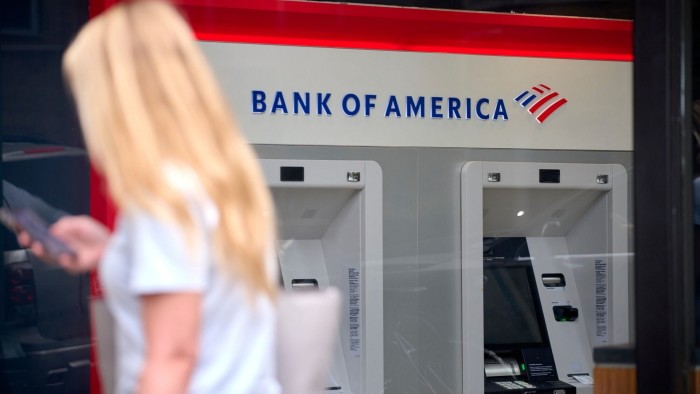Unlock the Editor’s Digest for free
Roula Khalaf, Editor of the FT, selects her favourite stories in this weekly newsletter.
Bank of America notched up better than expected profits in the second quarter as the US lender expanded its deposit base and loan book and benefited from robust Wall Street trading activity.
The group’s net income rose about 3 per cent to $7.1bn, exceeding analyst expectations of $6.8bn. Revenues rose 4 per cent to $26.5bn, slightly missing forecasts of $26.7bn.
Revenues at the retail bank rose 6 per cent to $10.8bn as the group grew its deposit base and loan book and benefited from higher net interest income, the difference in its cost of funding and rates it charges.
The US lender with a large domestic consumer footprint also increased its provision for credit losses to $1.6bn, from $1.5bn in the same period last year. However, its provisions at the retail bank were flat, highlighting the relative health of US consumers.
“Consumers remained resilient, with healthy spending and asset quality, and commercial borrower utilisation rates rose,” said BofA chief executive Brian Moynihan.
Provisions for credit losses at BofA’s corporate and investment bank jumped 18 per cent year on year to $277mn as the bank grew its commercial loan book.
Still, the bank reported resilient credit quality at the division, with charge-offs falling by 12 per cent year on year to $303mn.
“What we’re seeing is stability at this point because the corporates are still quite profitable,” said Bank of America’s chief financial officer Alastair Borthwick.
Higher activity in the markets division helped offset lacklustre performance at its investment bank.
Trading revenues jumped 14 per cent to $5.3bn as the bank’s bond and equities desks were boosted by higher volatility linked to geopolitical tensions and US protectionist tariffs.
Fees at the investment bank were, however, down to $1.4bn per from $1.6bn a year earlier.
The decline at BofA contrasted with an investment banking rebound at Goldman Sachs, Citi and JPMorgan in the quarter, after dealmaking took a hit from the market shock of Donald Trump’s sweeping “liberation day” tariff announcements on April 2.
Borthwick said the bank’s M&A business had been made up of smaller deals in the quarter, even as megadeals returned to the deals market. He said the bank hoped for a stronger second half of the year following a “pretty decent recovery” in M&A and debt and equity underwriting over the past two months.
BofA’s shares rose about 1 per cent in pre-market trading on Wednesday.
https://www.ft.com/content/b09fca64-2451-4e7d-bfee-189c2f66a0c3


